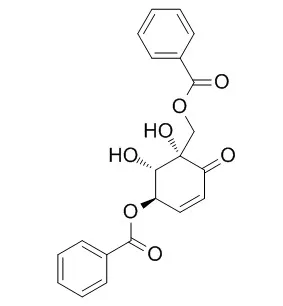| Kinase Assay: |
| Sci Rep. 2017 May 10;7(1):1669. | | Zeylenone, a naturally occurring cyclohexene oxide, inhibits proliferation and induces apoptosis in cervical carcinoma cells via PI3K/AKT/mTOR and MAPK/ERK pathways.[Pubmed: 28490807 ] | There is a strong rationale to therapeutically target the PI3K/Akt/mTOR and MAPK/ERK pathways in cervical carcinoma since they are highly deregulated in this disease.
Previous study by our group have demonstrated that Zeylenone (Zey) exhibited strong suppressive activity on PI3K/AKT/mTOR and MAPK/ERK signaling, providing a foundation to investigate its antitumor activity in cervical carcinoma. Herein, the present study aimed to investigate suppressive effect of Zey on HeLa and CaSki cells, and further explore the underlying mechanisms.
METHODS AND RESULTS:
Cells were treated with Zey for indicated time, followed by measuring its effects on cell viability, colony formation, cell cycle, cell apoptosis, and signal pathways. In vivo antitumor activity of Zey was then assessed with nude xenografts. We found that Zey substantially suppressed cell proliferation, induced cell cycle arrest, and increased cell apoptosis, accompanied by increased production of ROS, decreased mitochondrial membrane potential, activated caspase apoptotic cascade, and attenuated PI3K/Akt/mTOR and MAPK/ERK pathways. Additionally, in vivo experiments showed that Zey exerted good antitumor efficacy against HeLa bearing mice models via decreasing levels of p-PI3K and p-ERK.
CONCLUSIONS:
Collectively, these data clearly demonstrated the antitumor activity of Zey in cervical carcinoma cells, which is most likely via the regulation of PI3K/Akt/mTOR and MAPK/ERK pathways. |
|
| Structure Identification: |
| Biosci Biotechnol Biochem. 2001 Jun;65(6):1395-8. | | Four polyoxygenated cyclohexenes from the Chinese tree, Uvaria purpurea.[Pubmed: 11471741 ] |
METHODS AND RESULTS:
Two novel polyoxygenated cyclohexenes, 6-methoxyzeylenol (3) and 2-acetoxyZeylenone (4), together with two known compounds, zeylenol (1) and Zeylenone (2), were isolated from the heartwood of the Chinese tree, Uvaria purpurea. Zeylenol (1) and Zeylenone (2) both showed inhibitory activity toward the root growth of Lactuca sativa.
CONCLUSIONS:
Their structures were established by spectroscopic and chemical methods. |
|






 Cell. 2018 Jan 11;172(1-2):249-261.e12. doi: 10.1016/j.cell.2017.12.019.IF=36.216(2019)
Cell. 2018 Jan 11;172(1-2):249-261.e12. doi: 10.1016/j.cell.2017.12.019.IF=36.216(2019) Cell Metab. 2020 Mar 3;31(3):534-548.e5. doi: 10.1016/j.cmet.2020.01.002.IF=22.415(2019)
Cell Metab. 2020 Mar 3;31(3):534-548.e5. doi: 10.1016/j.cmet.2020.01.002.IF=22.415(2019) Mol Cell. 2017 Nov 16;68(4):673-685.e6. doi: 10.1016/j.molcel.2017.10.022.IF=14.548(2019)
Mol Cell. 2017 Nov 16;68(4):673-685.e6. doi: 10.1016/j.molcel.2017.10.022.IF=14.548(2019)